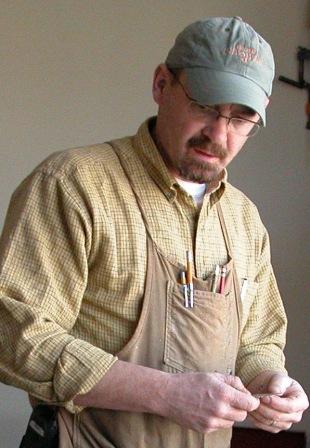
When assembling anything out of solid wood (vs. plywood) one has to consider wood movement. Wood will move - it cannot be stopped. And, if it is held tightly it will crack, split, push, and otherwise create havoc. So, either design it to move, or watch it slowly tear it self apart. As I said, wood is anisotropic - it moves in different directions depending on grain direction and it moves with changes in humidity.
A board has three dimensions - length, width, and depth. But, grain direction is dependent on how a board is sawn. Wood moves least in length, and for practical purposes the amount is insignificant and in furniture construction almost ignored. It moves least tagentently to the grain - as in the quartered board in the diagram. This is called quartersawn or rift sawn lumber. It move most in the flat sawn dimension, or as woodworkers say, "across the grain". (It also tends to cup because of the differences in expansion and skrinkage - the two opposing forces working in opposite directions.)
So, what does this mean for our night stand? It must be designed for the movement of the wood. The best way to illustrate this is to look or think about a door panel. Most likely there is one in your kitchen. A typical door has rails (on the top and bottom) and stiles on the sides that frame the panel. The panel is not fixed, but floats within the four sides. This is called frame and panel construction or a floating panel. If the panel were fixed the panel would crack (during low humidity) or push apart the stiles (during high humidity). There are many ways to accommodate wood movement and the selected method is a factor of many considerations. I will use the floating panel on the sides, but the panel won't be raised, but flat fit into a grove along the legs and the intermediate horizontal sections. Each panel will fit loosely and thus not push upon the other panels.
There are many ways to accommodate wood movement and the selected method is a factor of many considerations. I will use the floating panel on the sides, but the panel won't be raised, but flat fit into a grove along the legs and the intermediate horizontal sections. Each panel will fit loosely and thus not push upon the other panels.
In addition to the wood's movement there is joint strength to consider. Wood can be joined from anything like a simple screw or dowel to dovetails and tenons and everything in between. As with most things, the most difficult is most often the best. That is why modern furniture is seldom made with traditional methods (or traditional materials like solid wood - plywoods and particle board can't even be joined by traditional methods.)
Most of the wood joints in these two stands will be mortise and tenon. Basically, a tongue is formed on one board and then fit into a square hole in the adjoining board. Usually, one piece is fit perpendicular to the other similar the the diagram of the rails and stiles above.
After basic design I need to write down the size of every piece of wood and how many I will need and then go to the lumber yard and try to find the sizes I need. This process is very much like a big puzzle - there are somewhere around 100 pieces of various sizes and thicknesses which will be sawn from various size boards. The object is not to have too much waste. Oak is about $4.00 a board foot and waste gets expensive fast. (a board foot is a piece of wood 12 inches wide, 12 inches long, and 1 inch thick).
To the lumber yard.
Thursday, December 28, 2006
Night stand - wood movement, joinery (post two)
Posted by
Art
at
9:52 AM
![]()
Labels: nightstand, shop, Woodworking
Subscribe to:
Post Comments (Atom)
Leave A Comment
Hey! Leave a comment - good, bad, short, long, whatever. I'd like to hear from you.




No comments:
Post a Comment